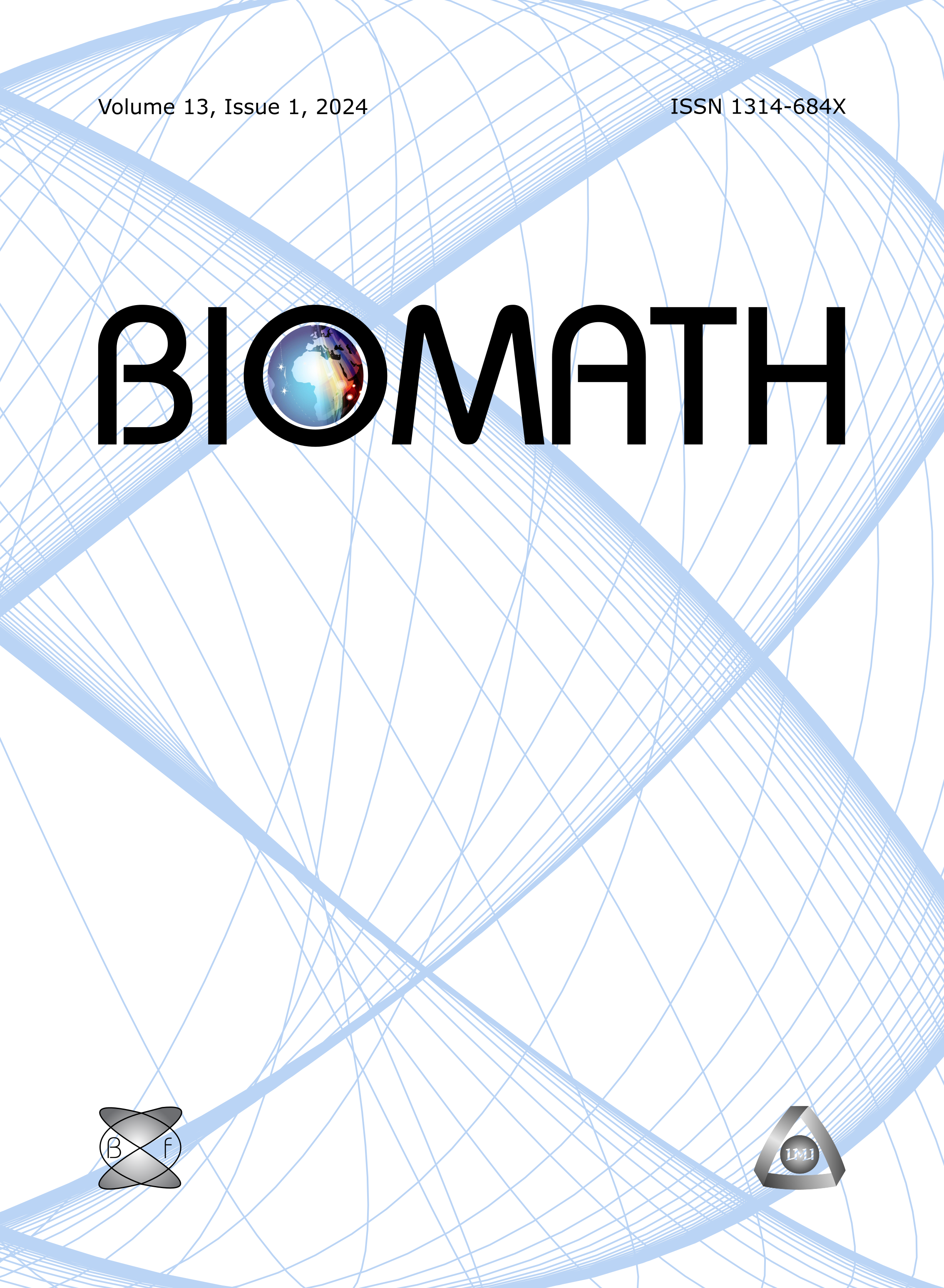Dynamical analysis of a chemostat model for 4-chlorophenol and sodium salicylate mixture biodegradation
DOI:
https://doi.org/10.55630/j.biomath.2023.11.027Keywords:
4-chlorophenol and sodium salicylate mixture, Biodegradation, Chemostat model, SKIP kinetics, Equilibrium points, Stability analysis, Hopf bifurcations, Numerical simulationAbstract
We consider a mathematical continuous-time model for biodegradation of 4-chlorophenol and sodium salicylate mixture by the microbial strain Pseudomonas putida in a chemostat. The model is described by a system of three nonlinear ordinary differential equations and is proposed for the first time in the paper [Y.-H. Lin, B.-H. Ho, Biodegradation kinetics of phenol and 4-chlorophenol in the presence of sodium salicylate in batch and chemostat systems, Processes, 10:694, 2022], where the model is only quantitatively verified. This paper provides a detailed analysis of the system dynamics. Some important basic properties of the model solutions like existence, uniqueness and uniform boundedness of positive solutions are established. Computation of equilibrium points and study of their local asymptotic stability and bifurcations in dependence of the dilution rate as a key model parameter are also presented. Thereby, particular intervals for the dilution rate are found, where one or three interior (with positive components) equilibrium points do exist and possess different types of local asymptotic stability/instability. Hopf bifurcations are detected leading to the occurrence of stable limit cycles around some interior equilibrium points. A transcritical bifurcation also exists and implies stability exchange between an interior and the boundary (washout) equilibrium. The results are illustrated by lots of numerical examples.
Downloads
Published
Issue
Section
License
Copyright (c) 2023 Neli Dimitrova

This work is licensed under a Creative Commons Attribution 4.0 International License.
The journal Biomath is an open access journal. All published articles are immeditely available online and the respective DOI link activated. All articles can be access for free and no reader registration of any sort is required. No fees are charged to authors for article submission or processing. Online publications are funded through volunteer work, donations and grants.
Authors who publish with this journal agree to the following terms:
- Authors retain copyright and grant the journal right of first publication with the work simultaneously licensed under a Creative Commons Attribution License 4.0 that allows others to share the work with an acknowledgement of the work's authorship and initial publication in this journal.
- Authors are able to enter into separate, additional contractual arrangements for the non-exclusive distribution of the journal's published version of the work (e.g., post it to an institutional repository or publish it in a book), with an acknowledgement of its initial publication in this journal.
- Authors are permitted and encouraged to post their work online (e.g., in institutional repositories or on their website) prior to and during the submission process, as it can lead to productive exchanges, as well as earlier and greater citation of published work (See The Effect of Open Access).

